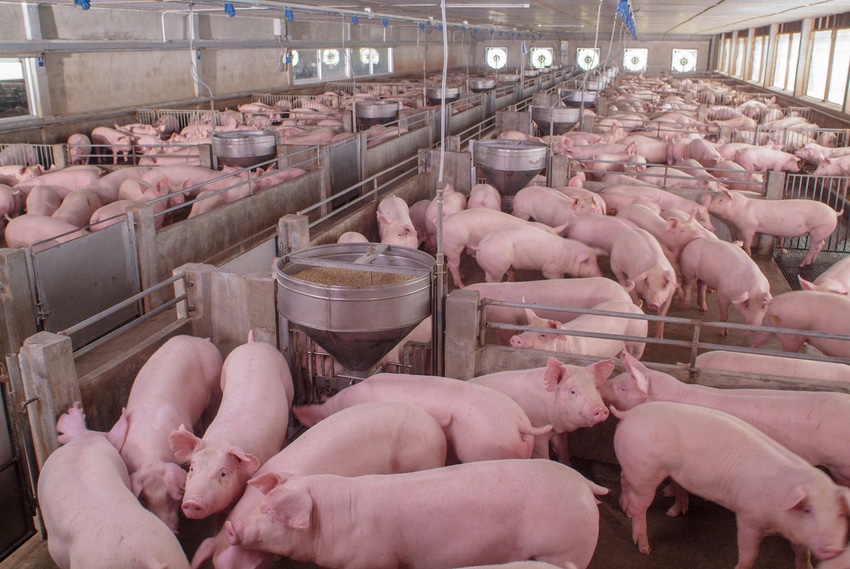
By Michael Hirtzer
U.S. pork plants are slowing down, threatening to derail the biggest rally pig farmers have seen in years and potentially raising costs for meat giants such as JBS SA.
By the end of this month, meatpackers will need to kill fewer hogs per hour after a federal judge in Minnesota threw out a U.S. Department of Agriculture directive that allowed elevated slaughter rates. Producers stand to lose $80 million this year as animals are likely to back up on their farms, said Jen Sorenson, president of the National Pork Producers Council.
Hog prices have surged to the highest in almost seven years as the market emerges from the pandemic with strong demand and tight supplies, following Covid-related plant closures last year that forced farmers to cull herds and even give animals away for free.
The good times might come to an end, though. Lean hog futures have already dropped 5% on the Chicago Mercantile Exchange since peaking on June 1.
August contracts fell by the exchange maximum of 3 cents, or 2.6%, to $1.117 a pound. The futures have fallen for five straight sessions, the longest slump since October.
The consequences of slower slaughtering for hog farmers was top of mind at the World Pork Expo in Des Moines, Iowa, this month. The event was held for the first time in three years, after it was canceled in 2019 because of the African swine fever that killed thousands of pigs in China, and in 2020 due to Covid-19.
Pork plants will likely try to make up for the slowdown by instituting mandatory overtime for workers, but that won’t be enough, according to Dermot Hayes, agriculture economist at Iowa State University and consultant for the NPPC. He estimates that capacity will decline by 2.5% and said packers “will have to cut production.”
Meatpackers have been relatively mum on the subject. JBS, whose U.S. subsidiary operates a plant in Illinois that had been allowed to run faster rates, declined to disclose line-speed information for confidentiality reasons.
“We calibrate daily line speeds based on workforce availability and other variables to ensure a safe working environment at all times,” the company said by email.
Tyson Foods Inc. said it “will continue to operate at production rates that ensure the safety of our team members and the products they’re producing.”
JBS and Tyson are the world’s two-largest meatpackers.
Hayes estimates the impact for consumers will probably be minimal, and farmers will likely lose the most because packers will pay less for their hogs.
“Pork farmers will lose because they will have to effectively pay the plants to run overtime,” he said.
Meanwhile, hog weights could start to creep up on the farm. “The slower chain speed will, over time, force hog weights upward, in effect, increasing total tonnage produced,” according to Dennis Smith, senior account executive at Archer Financial Services Inc. This could even end up helping make pork cheaper for consumers, he said.
Mark Lauritsen, vice president of meatpacking at the United Food and Commercial Workers Union that represents thousands of plant employees, said slower speeds will be safer. Under the current elevated speeds, workers need “to work harder and work faster, and that’s what leads to injuries,” Lauritsen said by phone.
There are other headwinds facing hog farmers even as high prices boost profits. Feed costs for corn and soybean meal have soared because of dry weather in major producing countries. Higher prices for building materials including lumber and steel are also making any industry expansion costly. A new California law could keep some pork raised in the Midwest out of the state, and China still has tariffs on many U.S. agriculture products including pork from the 2018 trade war.
While the pulled-pork sandwiches and smoked ribs have returned to the Iowa State Fairgrounds where the World Pork Expo is held, the live hogs once showcased are still missing, and animal shows may be gone permanently to minimize the risk of spreading disease.
Despite the concerns over slower slaughtering, prices are still high enough to sustain farmers’ profits.
“Right now it’s profitable,” said Neil Dierks, who will retire at the end of the year as chief executive officer of the NPPC. “I’m not sure that producers are back to ground zero from where they were from two years of trade retaliation, followed by the pandemic. But it’s certainly a better atmosphere for producers financially than it had been.”
--With assistance from Elizabeth Elkin.
© 2021 Bloomberg L.P
About the Author(s)
You May Also Like




